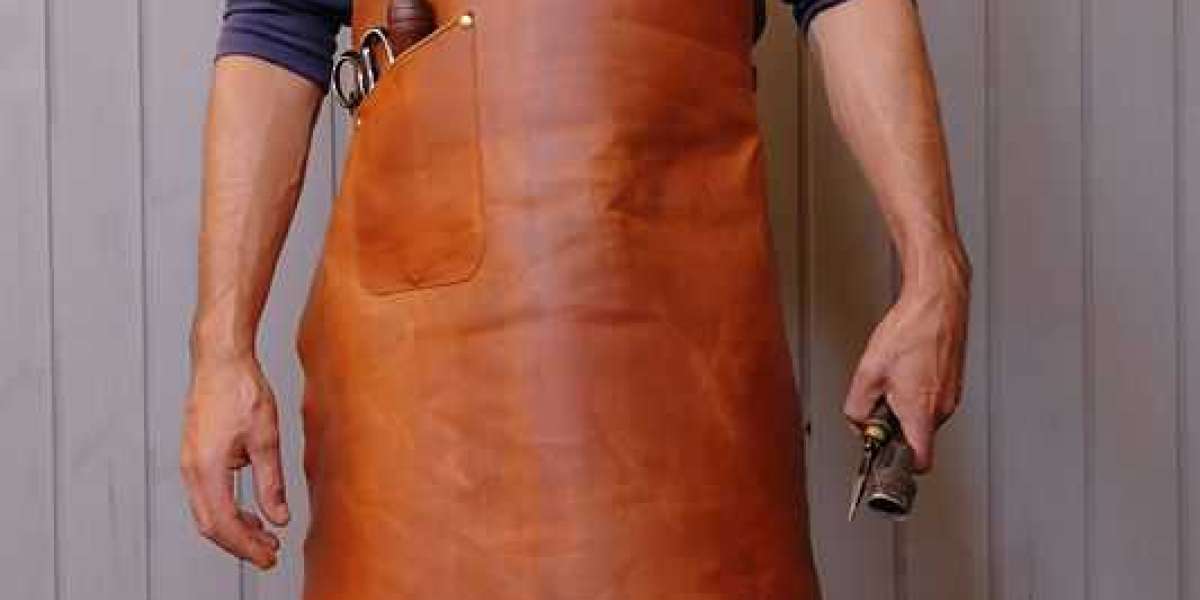In the world of metalworking, the blacksmith apron stands as both a symbol of tradition and a vital piece of protective gear. This enduring garment, worn by artisans who transform raw metal into finely crafted tools and art, reflects the age-old craftsmanship and dedication that define the blacksmithing profession. In this article, we'll delve into the history, design, and importance of the blacksmith apron, exploring how this simple yet essential piece of attire continues to play a crucial role in modern metalworking.
The Historical Evolution of the Blacksmith Apron
The blacksmith apron has been an integral part of metalworking for centuries. Historically, blacksmiths were among the most skilled tradespeople, working in forge shops that were often filled with intense heat and flying sparks. The need for protective clothing was paramount, leading to the development of aprons designed to safeguard against the harsh conditions of the forge.
Early blacksmith aprons were made from a variety of materials, including leather and canvas. Leather was favored for its durability and resistance to heat and sparks. These aprons were often handmade, with blacksmiths customizing them to their own needs. As the industrial revolution progressed, mass production techniques allowed for more standardized aprons, though leather remained the preferred material due to its superior protective qualities.
Design and Materials
Traditional Materials
The traditional blacksmith apron is typically crafted from thick, high-quality leather. Leather offers several advantages for blacksmithing. It is heat-resistant, preventing burns and protecting the wearer from hot metal shards and sparks. Leather also has a natural flexibility, allowing the apron to move with the wearer while still providing ample coverage.
Another traditional material used for blacksmith aprons is canvas. Though not as heat-resistant as leather, canvas aprons offer durability and can be treated to enhance their protective properties. Modern blacksmiths often use canvas aprons for lighter work or as an additional layer of protection.
Modern Innovations
In recent years, advancements in materials have led to the development of modern blacksmith aprons that incorporate synthetic fabrics and blends. These materials are designed to mimic the protective qualities of leather while offering enhanced comfort and lighter weight. Some modern aprons feature reinforced stitching and additional padding in key areas to further enhance protection and comfort.
The design of blacksmith aprons has also evolved to include various features aimed at improving functionality. Adjustable straps, multiple pockets, and reinforced knee pads are just a few examples of how contemporary aprons cater to the needs of today's blacksmiths. These innovations ensure that the apron not only protects but also supports the blacksmith in their craft.
The Role of the Blacksmith Apron in Craftsmanship
Protection and Safety
The primary function of the blacksmith apron is to provide protection. Blacksmithing involves working with extremely hot materials, and the risk of burns and injuries is significant. The apron serves as a barrier between the blacksmith and the hazardous environment of the forge. It protects the wearer from flying sparks, molten metal, and intense heat, reducing the risk of burns and other injuries.
Enhancing Work Efficiency
Beyond protection, the blacksmith apron contributes to work efficiency. The design of the apron often includes multiple pockets, which allow the blacksmith to keep essential tools and accessories within easy reach. This organization helps streamline the workflow, enabling the blacksmith to focus on their craft without unnecessary interruptions.
Tradition and Identity
The blacksmith apron is more than just protective gear; it is a symbol of tradition and identity within the craft. For many blacksmiths, wearing the apron is a way to connect with the long history of their profession. It signifies a commitment to the art of metalworking and a respect for the techniques passed down through generations.
Care and Maintenance
Proper care and maintenance are essential to ensure the longevity and effectiveness of a blacksmith apron. Leather aprons require regular conditioning to keep the material supple and prevent cracking. Cleaning should be done with a damp cloth, and harsh chemicals should be avoided. Canvas aprons, on the other hand, can usually be machine washed, but it is important to follow the manufacturer’s instructions to avoid damaging the fabric.
Storing the apron in a dry, cool place helps prevent mold and mildew growth. For aprons with synthetic materials, checking for any specific care instructions is crucial to maintain their protective properties.
Conclusion
The blacksmith apron is a testament to the enduring nature of craftsmanship and the importance of protection in metalworking. From its historical origins to modern innovations, the apron has evolved to meet the needs of blacksmiths while maintaining its core function of safeguarding the wearer. As a symbol of tradition and a practical tool, the blacksmith apron continues to play a vital role in the art of metalworking, bridging the gap between ancient techniques and contemporary practices. Whether made from traditional leather or modern materials, the blacksmith apron remains an indispensable part of the blacksmith’s attire, embodying the skill, dedication, and artistry of this timeless craft.








